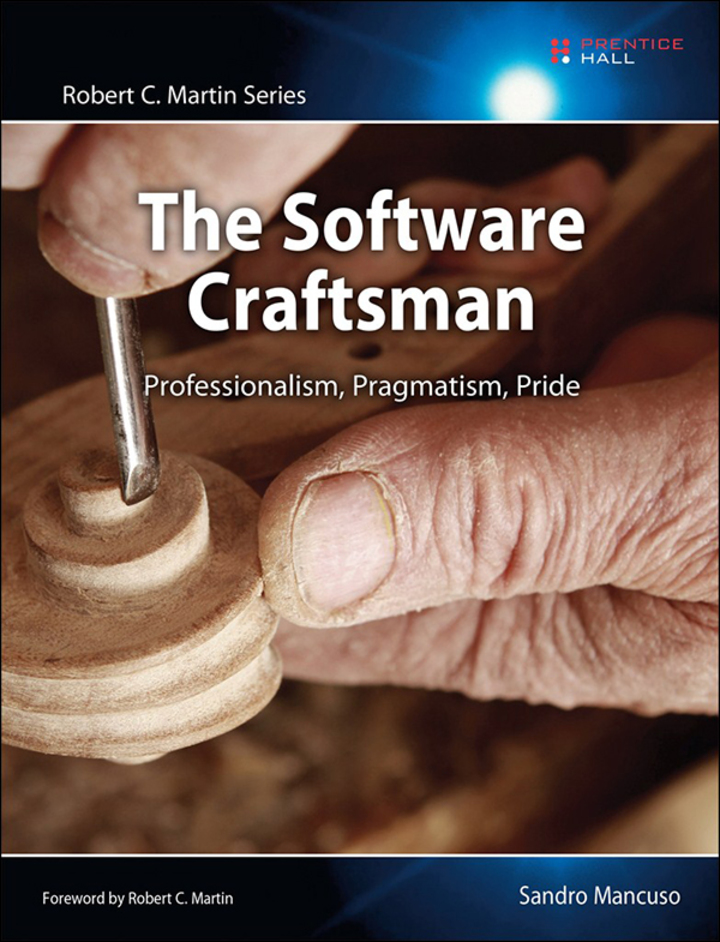
Software Craftsman, The: Professionalism, Pragmatism, Pride, 1st edition
PUBLISHER: PEARSON
eBook edition. 1 Year Subscription. Dành cho Cá nhân | Trường ĐH, Nhóm, Thư Viện: Gọi 0915920514 để báo giá Pearson, Vital Source eBook hoặc mua Sách In
Trong The Software Craftsman, Sandro Mancuso giải thích ý nghĩa của nghề thủ công đối với nhà phát triển và tổ chức của họ, đồng thời chỉ ra cách sống với nghề thủ công đó hàng ngày trong môi trường phát triển thế giới thực của bạn. Mancuso cho thấy kỹ năng sử dụng phần mềm phù hợp như thế nào và giúp sinh viên cải thiện các nguyên tắc kỹ thuật thực hành tốt nhất như linh hoạt và tinh gọn, đưa tất cả các dự án phát triển lên một tầm cao mới. Người đọc sẽ học cách thay đổi nhận thức tai hại rằng các nhà phát triển phần mềm cũng giống như công nhân nhà máy và các dự án phần mềm có thể được vận hành như nhà máy.
- Foreword by Robert C. Martin xvPreface xviiAcknowledgments xxvAbout the Author xxixPart I: Ideology and Attitude 1
- Chapter 1: Software Development in the Twenty-First Century 3Seniority 5A New Reality 6
- Chapter 2: Agile 9Process-Oriented Agile Disciplines 10Technical-Oriented Disciplines 10What Is It to Be Agile? 11Agile Manifesto 12The Agile Transformation Era 14The Agile Hangover 14Agile versus Software Craftsmanship 21Summary 22
- Chapter 3: Software Craftsmanship 23A Better Metaphor 23What Does Wikipedia Say? 24A More Personal Definition 24A Shorter Definition 24Beyond Definitions 25Craft, Trade, Engineering, Science, or Art 25Software Craftsmanship History 26Summary 39
- Chapter 4: The Software Craftsmanship Attitude 41Who Owns Your Career? 42Keeping Ourselves Up to Date 44Know Who to Follow 48Practice, Practice, Practice 48Socialize 54Deliberate Discovery 55Work-Life Balance 56Summary 60
- Chapter 5: Heroes, Goodwill, and Professionalism 61Learning How to Say No 64Providing Options 70Enlightened Managers 74Summary 75
- Chapter 6: Working Software 77Working Software Is Not Enough 78Looking After Our Garden 79The Invisible Threat 79The Wrong Notion of Time 81Legacy Code 88Summary 91
- Chapter 7: Technical Practices 93The Right Thing versus the Thing Right 93Context 94Extreme Programming History 96Practices and Values 97Accountability 104Pragmatism 105Summary 106
- Chapter 8: The Long Road 107A Tale from a Brazilian Teenager 107Focus and Determination 110Job as Investment 111Autonomy, Mastery, and Purpose 113Career Inside Companies 114Summary 115Part II: A Full Transformation 117
- Chapter 9: Recruitment 119An Ordinary Job Description 120Too Busy to Interview 122No Job Descriptions 123Recommendations 130Community Involvement 130Defining Effective Filtering Criteria 131Proactive Recruitment 134Summary 135
- Chapter 10: Interviewing Software Craftsmen 137A Business Negotiation 137Identifying Productive Partnerships 138Good Interviews 142Taking a Punt 148Hiring for an Existing Team versus Hiring for a New Team 149Pre-Interview Coding Exercises 150Everyone Should Know How to Interview 151Developers Must Interview Developers 152Summary 152
- Chapter 11: Interview Anti-Patterns 153Don’t Be a Smart-Ass Interviewer 153Don’t Use Brainteasers 154Don’t Ask Questions to Which You Don’t Know the Answers 154Don’t Try to Make the Candidate Look Like a Fool 155Don’t Block the Internet 156Don’t Code on a Piece of Paper 156Don’t Use Algorithms 157Don’t Conduct Phone Interviews 157Summary 158
- Chapter 12: The Cost of Low Morale 159The Agile Hangover: Low Morale 159The Cost of Employing 9-to-5 Developers 161Constrained by Lack of Motivation 164Injecting Passion 165Summary 167
- Chapter 13: Culture of Learning 169Wrong Motivation 170Creating a Culture of Learning 171What if Others Don’t Want to Join In? 179Summary 182
- Chapter 14: Driving Technical Changes 185Identifying Skepticism Patterns 185Be Prepared 189Where Do We Start? 191Fear and Incompetence 195How Do I Convince My Manager? 196How Do I Convince My Team to Do TDD? 197Facing the Skeptics 198Should We Really Care about All That? 205Summary 205
- Chapter 15: Pragmatic Craftsmanship 207Quality Is Always Expected 207Busting the “Expensive and Time-Consuming Quality” Myth 209Refactoring 211The “One Way” of Developing Software 212Helping the Business 213Software Projects Are Not about Us 217Great versus Mediocre 217Four Rules of Simple Design 218Craftsmanship and Pragmatism 221Summary 222
- Chapter 16: A Career as a Software Craftsman 223Being a Craftsman 224Career Progression 225Roads and Milestones 227Job Diversity 231The Mission 233Appendix: Craftsmanship Myths and Further Explanations 235Index 241















